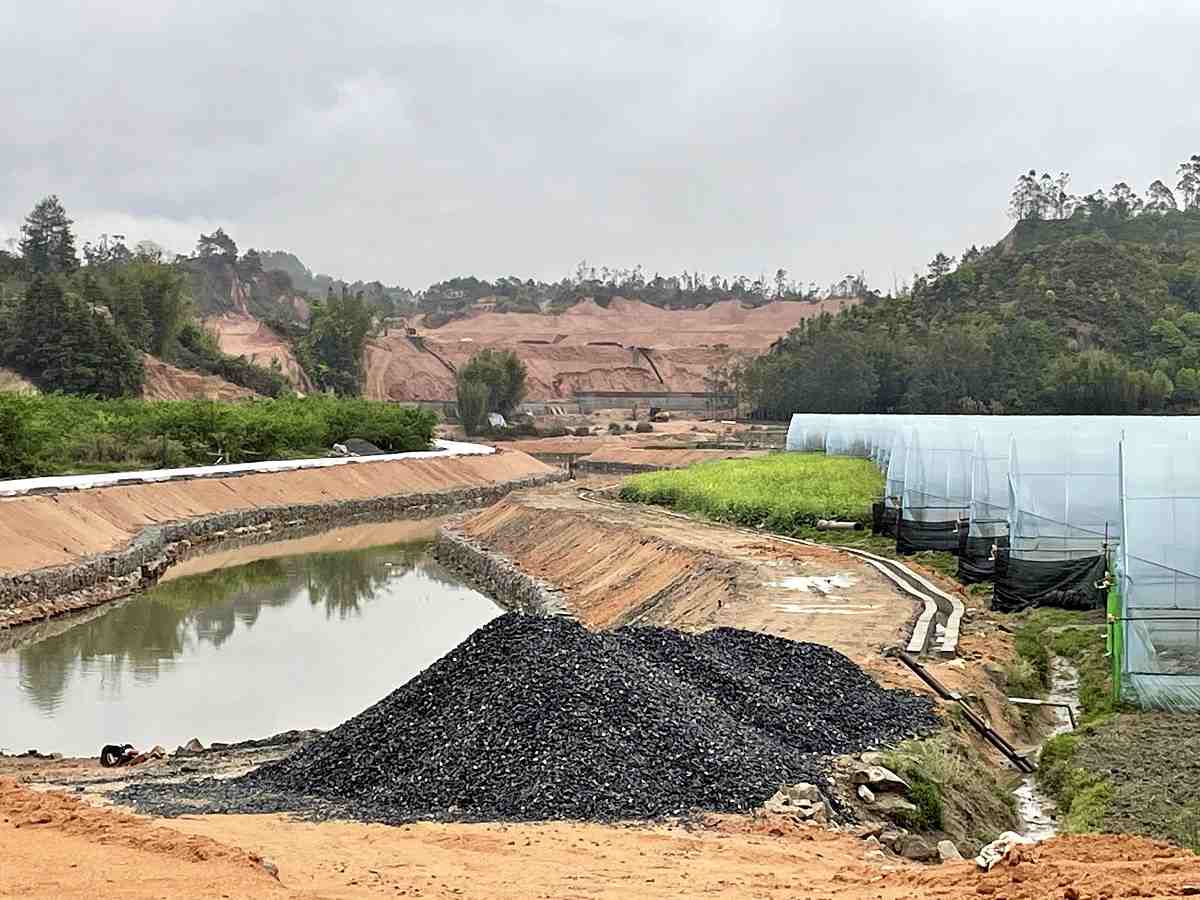
A mine is seen in China’s Guangdong Province in late March.
1:00 JST, April 6, 2023
Japanese government measures to prevent the outflow of manufacturing technology related to high-performance, rare-earth magnets appear to have failed.
China, whose firms developed technology and equipment acquired from Japan, now dominates the market for advanced magnets, a highly important sector in which Japanese companies used to have a competitive edge.
The Japanese government implemented export controls on goods and technologies that can be converted to military use under the Foreign Exchange and Foreign Trade Law: comprising so-called “list controls” and “catch-all controls.” List controls target goods that have a high risk of being converted into weapons of mass destruction, and catch-all controls involve broader restrictions on items not covered under list controls.
According to a Japanese company source, when China imposed restrictions on rare earth exports to Japan around 2010, several Chinese government officials told Japanese firms that they would supply rare earth materials in exchange for rare earth-related technology.
The Japanese government added high-performance magnets to the catch-all regulation in 2012 because such materials can be used in various types of weapons.
Following the move, related production involving Japanese firms in China temporarily stopped. But since around 2014, the establishment of joint Japanese-Chinese ventures for the production of high-performance, rare-earth magnets set the stage for the outflow of key technologies.
The acquisition of advanced Japanese magnet manufacturing equipment enabled Chinese manufacturers to rapidly increase their technological capabilities. As a result, low-cost high-performance, rare-earth magnets hit the market, leaving Japanese manufacturers exposed to excessive competition.
A Chinese manufacturer is said to supply more than 95% of the magnets used in the drive motors of a major U.S. electric vehicle manufacturer.
Beijing, which is in the process of revising a list of technologies subject to export controls, is poised to regulate magnet manufacturing technology that China claims was developed domestically even though it originated in Japan.
Similar circumstances existed in the past for technologies related to high-speed railroads and photovoltaic panels.
At present, there are still several magnet manufacturers in Japan, including TDK Corp. and Shin-Etsu Chemical Co., which hold about 15% of the global magnet manufacturing market.
The market share of Japanese manufacturers might continue to shrink due to the mass production of low-cost products by Chinese manufacturers. Nevertheless, the presence of Japanese firms could still prove to be an obstacle to China, which aims to extend its dominance in the sector.
"Politics" POPULAR ARTICLE
-

Japan to Support Central Asian Logistics Route That Bypasses Russia, Plan to Be Part of Upcoming Summit in Tokyo
-

Japan to Tighten Screening of Foreigners’ Residential Status by Providing Information of Nonpayment of Taxes
-

Chinese, Russian Bombers Flew Unusual Path by Heading Toward Tokyo; Move Likely Meant to Intimidate Japan
-

Japan Plans National Database to Track Foreign Ownership of Real Estate, Land as It Weighs New Rules
-

Up to 199,000 Deaths Estimated From Mega-Tsunami; Most Recent Occurrence Took Place in 17th Century
JN ACCESS RANKING
-

Tokyo Economic Security Forum to Hold Inaugural Meeting Amid Tense Global Environment
-

Keidanren Chairman Yoshinobu Tsutsui Visits Kashiwazaki-Kariwa Nuclear Power Plant; Inspects New Emergency Safety System
-

Imports of Rare Earths from China Facing Delays, May Be Caused by Deterioration of Japan-China Relations
-

University of Tokyo Professor Discusses Japanese Economic Security in Interview Ahead of Forum
-

Japan Pulls out of Vietnam Nuclear Project, Complicating Hanoi’s Power Plans

























